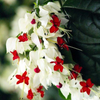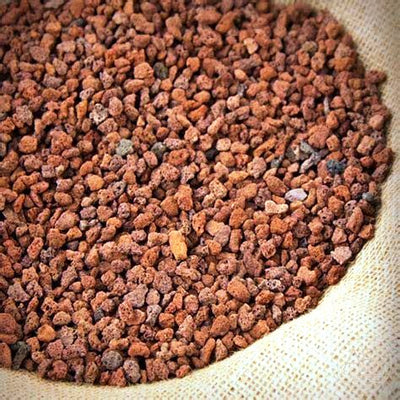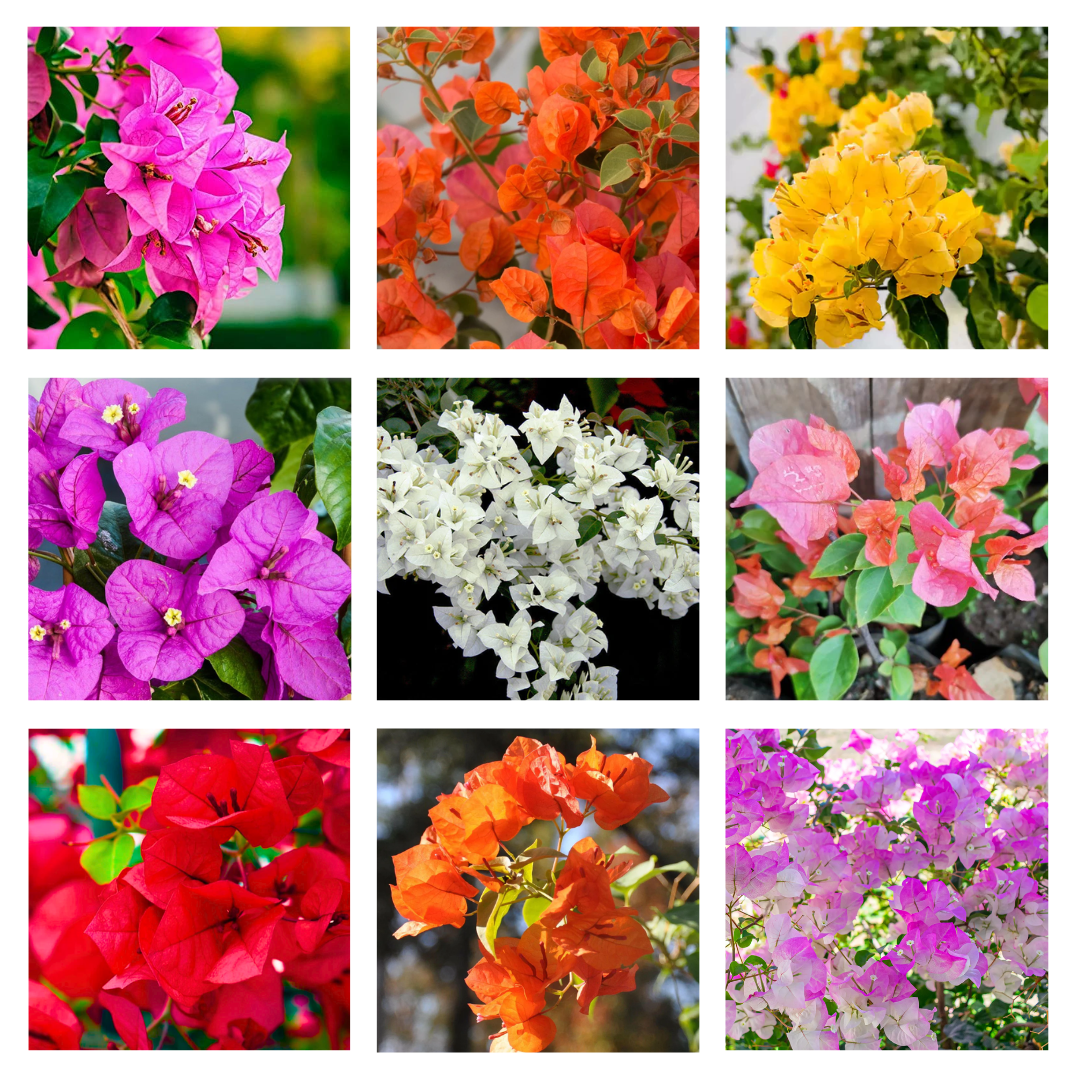
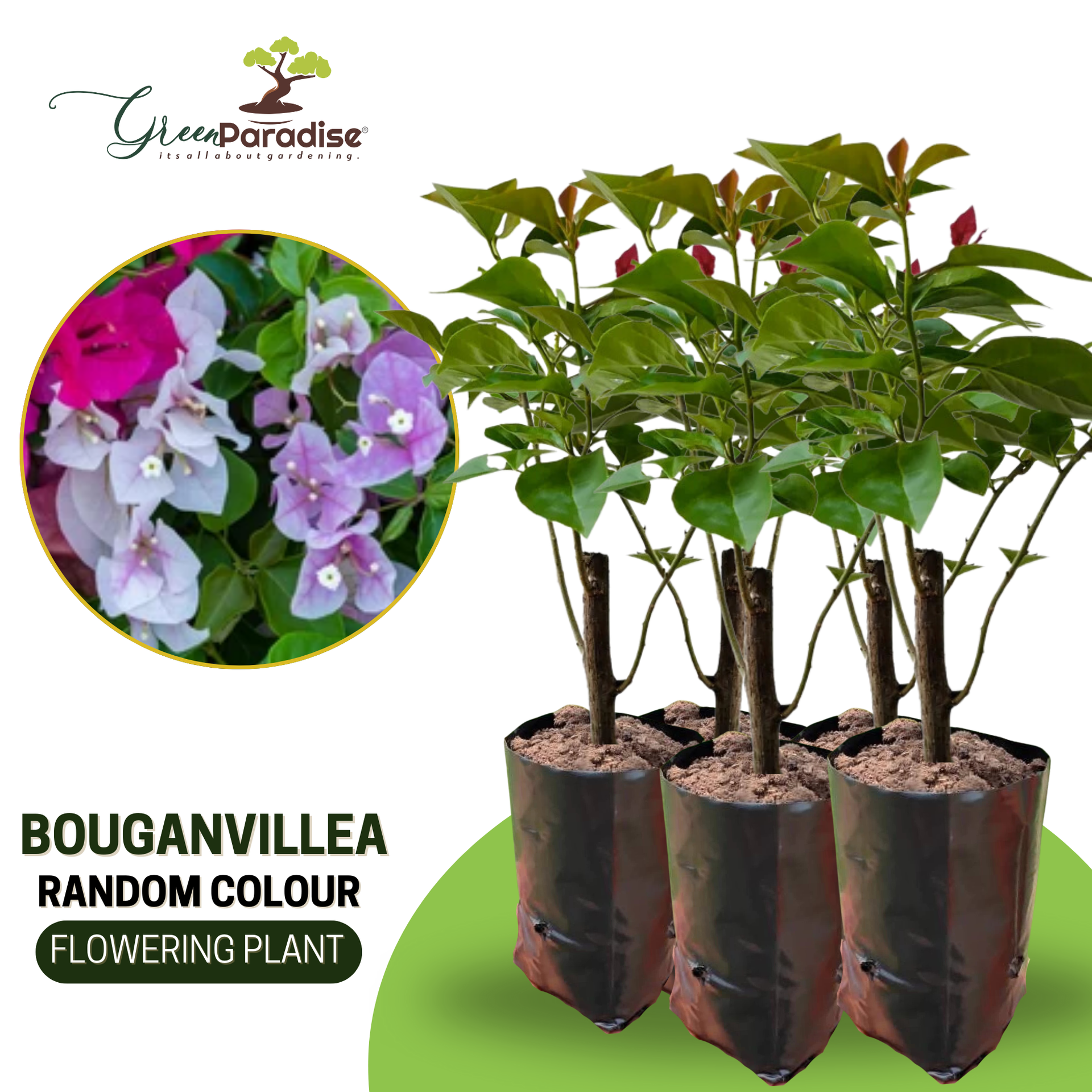
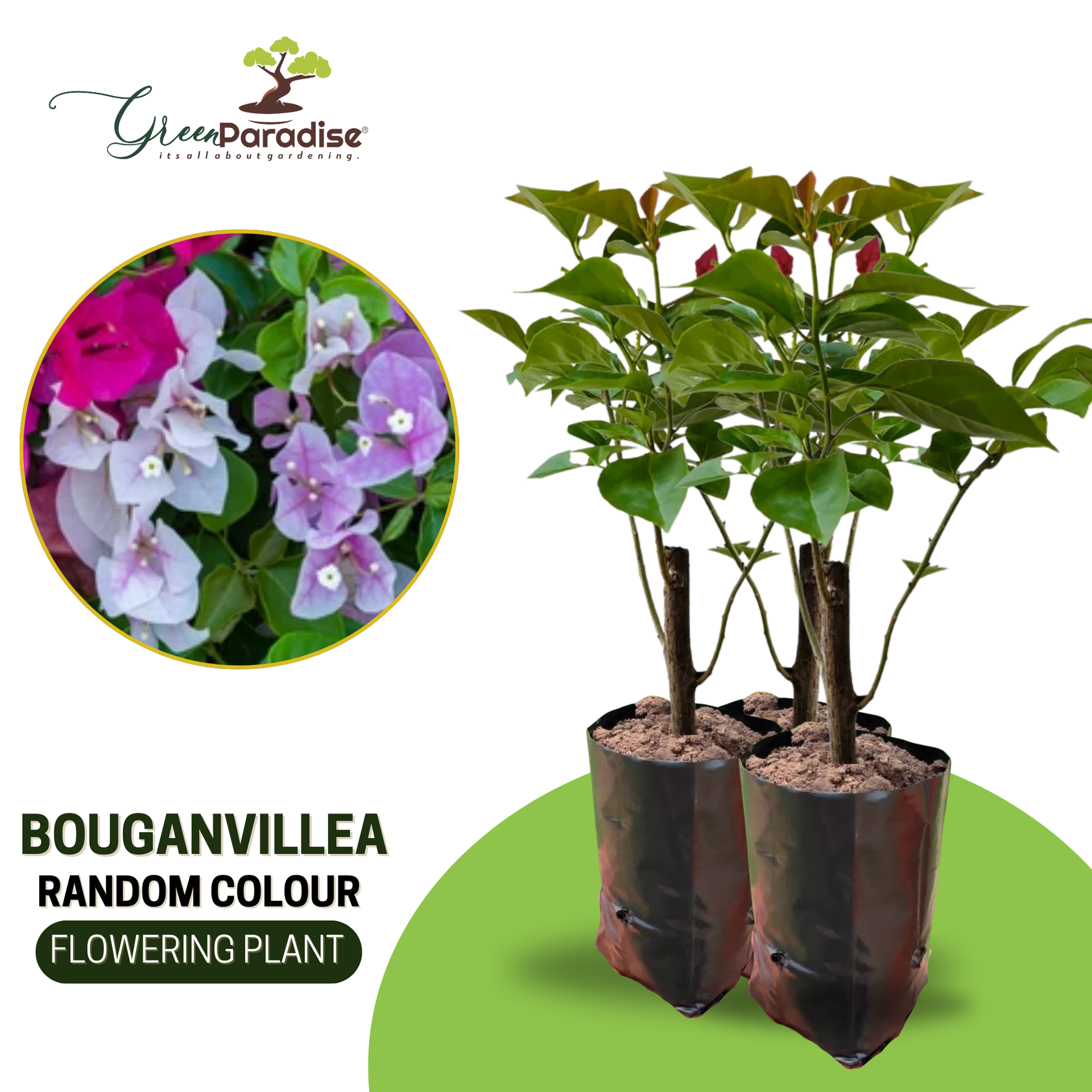
Bougainvillea sapling plants in random colors with poly bags
Guaranteed Safe Checkout
Green Paradise Offers Beautiful
Bougainvillea Sapling Plants (Set Of 5)
Random Colour Plant
About Bougainvillea Pink Colour Plant
Bougainvillea Plant: A Vibrant and Versatile Ornamental Marvel
Introduction
Bougainvillea (Bougainvillea spp.) is a breathtakingly beautiful and versatile plant that has captured the hearts of gardeners and plant enthusiasts worldwide. Known for its vibrant colors, thorny branches, and abundant blooming, the Bougainvillea plant has become a staple in gardens, landscapes, and even indoor spaces, adding an element of tropical charm wherever it grows. In this article, we will explore the fascinating world of the Bougainvillea plant, from its origin and characteristics to cultivation tips and various uses in gardening and landscaping.
Origin and Varieties
Brazil, Peru, and Argentina are the countries in South America where the native Bougainvillaea plant is found. It was named after the French navigator Louis Antoine de Bougainville, who encountered the plant during his voyage in the 18th century. There are numerous species and hybrids of Bougainvillea, each varying in size, color, and growth habits. Some popular varieties include Bougainvillea glabra, Bougainvillea spectabilis, Bougainvillea 'Barbara Karst,' Bougainvillea 'Royal Purple,' and Bougainvillea 'Golden Glow.'
Characteristics and Appearance
Bougainvillea is a woody and thorny vine that can either be evergreen or deciduous, depending on the climate. Its leaves are elliptical and leathery, while the show-stopping bracts, not the flowers themselves, are what give the plant its mesmerizing colors. These bracts are available in a wide range of hues, including vibrant shades of pink, purple, red, orange, yellow, and even white, making Bougainvillea a true spectacle of nature.
Cultivation and Care
Climate and Sunlight:
- Bougainvilleas thrive in warm, tropical, and subtropical climates.
- They love plenty of sunlight and should be planted in areas receiving at least 6 hours of direct sunlight daily.
Soil Requirements:
- Well-draining soil is essential for the healthy growth of Bougainvillea.
- It can tolerate slightly acidic to mildly alkaline soil but does best in neutral to slightly acidic conditions.
Watering:
- While Bougainvillea is drought-tolerant once established, regular watering during its initial growth period is necessary.
- To avoid root rot, never overwater plants.
Pruning:
- Pruning is vital to maintain the plant's shape and encourage new growth and blooming.
- The best time to prune is after the flowering cycle, as Bougainvillea blooms on new growth.
Fertilization:
- A balanced fertilizer, high in potassium and phosphorus, will promote healthy flowering.
- However, excessive nitrogen can lead to lush foliage but fewer blooms.
Gardening and Landscaping Uses
Bougainvillea's versatility is a significant reason for its popularity among gardeners and landscapers. Here are some common uses:
Arbors and Trellises:
- Trained on an arbor or trellis, Bougainvillea creates a stunning canopy of colors, making it a perfect focal point in any garden.
Hedges and Privacy Screens:
- With its thorny branches and dense growth, Bougainvillea can be shaped into beautiful hedges and privacy screens, offering a natural and colorful barrier.
Potted Plants:
- Bougainvillea can be grown in containers, allowing gardeners with limited space to enjoy its beauty on balconies, patios, or even indoors, near sunny windows.
Ground Cover:
- Some low-growing varieties of Bougainvillea can be used as ground cover, providing a vibrant carpet of colors.
Conclusion
In conclusion, the Bougainvillea plant is an enchanting ornamental marvel that continues to captivate gardeners worldwide. Its dazzling colors, versatility in landscaping, and relatively low maintenance needs make it a sought-after addition to any garden or outdoor space. As long as it is given the right growing conditions and care, the Bougainvillea plant will reward its caretakers with a breathtaking display of colors, transforming ordinary spaces into vibrant tropical paradises. So, if you seek to add a touch of splendor to your surroundings, consider inviting the Bougainvillea into your gardening endeavors; you won't be disappointed!
How to Grow Bougainvillea Plant: Tips and Guidelines
- Bougainvillea, with its vibrant and eye-catching blooms, is a popular choice for gardeners looking to add a splash of color to their landscapes.
- Native to South America, this versatile plant is known for its lush foliage and distinctive papery flowers, which come in various shades of pink, purple, red, orange, and white.
- While bougainvilleas are relatively easy to grow, they do require specific care and attention to thrive and produce abundant blossoms.
- In this article, we will guide you through the essential steps to successfully cultivate a healthy and flourishing bougainvillea plant.
1. Choosing the Right Location:
- Bougainvillea thrives in sunny locations with at least 6-8 hours of direct sunlight per day.
- So, when selecting a spot for your plant, make sure it receives ample sunlight.
- Ideally, the plant should be placed in a location that faces south or west to maximize sunlight exposure.
2. Providing Proper Soil and Drainage:
- These plants prefer well-draining soil with a slightly acidic to neutral pH range (around 6.0 to 7.0).
- Sandy loam soil enriched with organic matter is ideal for bougainvillea.
- Ensure that the planting area has excellent drainage, as waterlogged roots can lead to root rot and other issues.
3. Planting Bougainvillea:
- When planting bougainvillea, dig a hole that is about twice the size of the root ball.
- To promote healthy root growth, gently remove the plant from its container and loosen the root ball.
- Place the plant in the hole, backfill it with soil, and tamp it down lightly.
- After planting, give the plant plenty of water to help it adapt to its new environment.
4. Watering:
- While bougainvillea prefers dry conditions, especially once established, it still requires regular watering, especially during the initial period after planting.
- Water the plant deeply and allow the soil to dry out before the next watering session.
- You might need to water more frequently when the weather is hot and dry.
5. Fertilizing:
- To promote blooming and overall health, fertilize your bougainvillea regularly during the growing season, which typically extends from spring to early fall.
- Choose a balanced fertilizer with a higher amount of potassium (K) to encourage flower production.
- Consult the package for details on application rates and frequency
6. Pruning:
- Pruning is crucial to maintain the shape and size of your bougainvillea and to encourage continuous blooming.
- The best time to prune is right after the plant's blooming cycle.
- Trim back the branches and pinch off the dead flowers regularly to stimulate new growth and encourage more blooms.
7. Trellis or Support:
- Depending on the variety, bougainvillea can be a climbing vine or a bushy shrub.
- If you have a climbing variety, provide a trellis or support for it to grow and climb on.
- Regularly train the vines to grow on the trellis to create a beautiful display.
8. Winter Care:
- Bougainvillea is sensitive to frost and cold temperatures, so if you live in a region with freezing winters, take the necessary precautions.
- Before the first frost, move potted bougainvillea indoors or into a greenhouse.
- In garden beds, cover the plant with a cloth or burlap to protect it from frost.
9. Pests and Diseases:
- Keep an eye out for common pests like aphids, mealybugs, and whiteflies, which can affect bougainvillea.
- Regularly inspect the plant and use appropriate insecticides or natural remedies to control infestations.
- Additionally, make sure there is adequate airflow around the plant to ward off fungus.
By following these guidelines and giving your bougainvillea proper care, you can enjoy a stunning display of vibrant colors throughout the blooming season. Remember that bougainvilleas can be a bit temperamental, but with patience and attention, you will be rewarded with a flourishing and captivating plant that will undoubtedly become the envy of your garden. Happy gardening!


